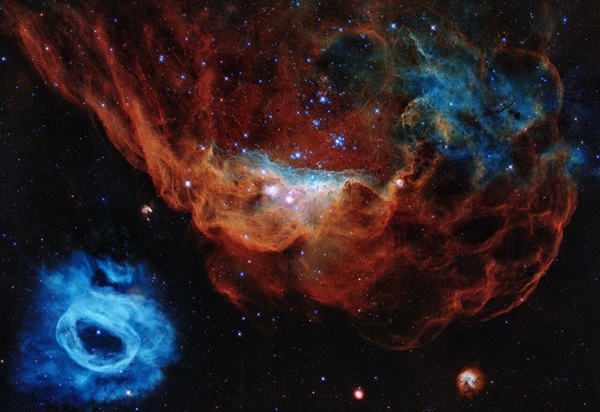Hubble peers into a Cosmic Reef – Astronomy Magazine
NGC 2014 (right) and NGC 2020 are part of a larger star-forming complex in the Milky Way’s largest satellite galaxy, the Large Magellanic Cloud.
NASA, ESA, and STScI
Nearby, blue-hued NGC 2020 is generated by a single Wolf-Rayet star 15 times more massive than the Sun and 200,000 times as luminous. NGC 2020’s color also comes from oxygen gas, which has been blown away from the central star and heated to roughly 19,800 degrees Fahrenheit (11,000 degrees Celsius).
Hubble has made invaluable contributions to science and outreach, engaging scientists and the public alike with breathtaking views of our universe. Its scientific contributions include 1.4 million astronomical observations to date, with many more to come. NASA expects the telescope to remain operational through at least 2025, and its orbit will remain stable until the 2030s.







